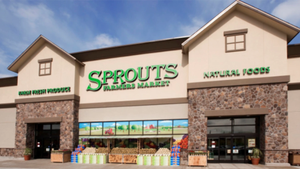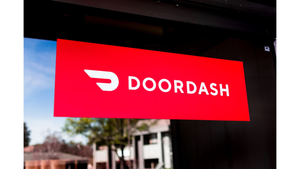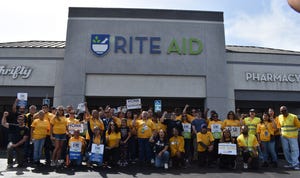Getting back in the fold
January 1, 2018
Manufacturers are hoping value-added products can drive laundry detergent sales. By Libby Basile The growing trend toward sustainability continues to affect the fabric care market. High efficiency washers save consumers money on water and require smaller doses of detergent. Last spring, two leading fabric care manufacturers, Procter & Gamble and the Church & Dwight Co., pledged to reduce the water in every dose of detergent by 25% over the next four years. While the move has gained consumers’ support, it has not necessarily sent them rushing to their nearest grocery store for more product as detergent sales are flat. According to the 2014 Home Laundry Products report from Chicago-based Mintel, category sales have slipped 4% to $12.6 billion over the last five years. Industry observers say more sustainable products, such as single-dose detergents, which promise the same cleaning action as other formats in perfectly measured portions, are likely accounting for the dip in sales—and more manufacturers are meeting the demand. “There is truth to that argument,” says Brian Sansoni, vice president of communication and membership and vice president of sustainability initiatives at the Washington, D.C.-based American Cleaning Institute. “Manufacturers continue to preach the overall message of sustainability—‘you don’t need to overdose.’” In liquid detergent, the trend has been toward concentrated formulas with two to three times the power as regular detergents, “but with those forms, there is still the tendency to over pour,” Sansoni says. Now most major brands have a single dose product, “and the unit dose takes away that problem,” he adds. According to IRI, single-dose detergents are the product form that has seen the most growth in the last two years. The segments sales total more than $700 million for the 52-week period ended August 10. However, liquid forms of detergent remain the top selling category in fabric care. The 2014 Home Laundry Products report claims eight in 10 adults who do laundry consistently across all demographic groups use it. Conversely, less than one in five adults who do laundry reach for powder or unit dose packs. Observers say that by focusing on core product offerings and implementing innovative product attributes focused on scent and stain fighting abilities, manufacturers are introducing products designed to improve sales. This includes offering products that tout odor removal abilities to stain fighting action. Observers add that consumers are reaching for these single attribute-focused products. “Manufacturers are becoming more innovative with their attributes,” says Sansoni. “That is what we’re seeing in every product form, from premium to mid-tier to value priced, product attributes are working to strengthen brands.” For example, stain fighting and effectiveness in cold water are among the top priorities for consumers, according to the Home Laundry Products report. The report features a study of 1,896 internet users, ages 18 and over, which found that 55% of users say they reach for stain fighters first, while 43% say they prefer cold water solutions. In the stain fighting category, the ability to clean body orders and sweat stains was a priority for four in 10 users. At the other end of the spectrum, fragrance-free and anti-bacterial properties were ranked among the lowest priorities for users. To meet these growing demands, in April, the Church & Dwight Co., based in Ewing, N.J., introduced Oxi Clean laundry detergent and Oxi Clean White Revive Laundry Stain Remover. “We understand that tough stains are a frustrating part of consumers’ everyday lives that end up costing them extra time and money to solve the problem,” says Ed Kline, director of the Oxi Clean Brand at Church & Dwight. Procter & Gamble, based in Cincinnati, launched Tide Oxi multi-purpose cleaner which, according to company officials, can be used to clean everything from carpets to bathrooms, and can also be used as an additive to detergent for stain fighting. P&G also offers its Gain Flings with Oxi Boost while Sun Products has its ALL Oxi-Active Laundry Detergent. Sweet smell of success Fragrance may not top the charts as a priority for consumers, but research shows scent is a key factor in purchasing decisions, especially among lower-income households. The 2014 Home Laundry Products report claims offering new fragrances and fragrance variety is essential for value- and mid-price brands. Observers say more major brands are appealing to consumers’ emotions with new scent-focused product launches. “Detergent makers are innovating with scent and fragrance to appeal to shoppers because a greater sense of smell equates to a greater sense of clean,” says Sansoni. In early 2014, Procter & Gamble introduced Gain Flings, a single-use detergent pack that boasts 50% more scent than the original Gain formula. Corresponding with the launch, P&G conducted a study with scent expert Dr. Alan Hirsch to prove the effects of the brand’s powerful scents and its correlation to music. The results of the study proved that the scent of Gain was more enjoyable than listening to a favorite song, says Dr. Hirsch. Procter & Gamble’s Bounce brand followed suit in May with the launch of Bounce Bursts, an in-wash laundry capsule that is designed to deliver the brand’s popular Outdoor Fresh scent to the wash cycle. In-wash scent boosters are currently driving sales in the liquid fabric softener category according to Mintel as category sales reached more than $1.7 million in 2014, up from $1.5 million in 2012. Marketing for the Bounce Bursts focused on scent, featuring commercials centered on how the product delivers the scent of the outdoors, inside, says P&G officials. “We understand that there are moments when you are unable to enjoy the scent of the great outdoors,” says Vedran Miletic, associate marketing director at Procter & Gamble. “The scent of Bounce is a recognizable staple in the laundry room and this new product allows the brand to offer more of that familiar scent experience.” While many of the new scent-focused products are tied to a brand’s recognizable fragrance, other innovations are closely related to what is happening in the fashion and lifestyle arena. “Vibrant fragrances are working their way into products, like jasmine, lavender and pink grapefruit,” says Sansoni. Procter & Gamble launched the Sweet Dreams collection last February, which features a sleep-inducing lavender scent in several Downy products. P&G’s Gain Flings collection also features a Tropical Moonlight Breeze scent. Last spring Church & Dwight teamed up with the National Park Foundation to launch Arm & Hammer Clean Scentsations, a line of nature-inspired detergents. Scents in that collection included Twilight Sky, inspired by Acadia National Park; Sunkissed Flower, inspired by Yosemite National Park; and Purifying Waters, inspired by Glacier Bay National Park. “Clearly fragrance is critical to many brands’ success,” says Sansoni. “It can really differentiate a product. We are seeing detergent makers working very closely with fragrance makers and a lot of time and research goes into the creation of fragrances. No matter what form of detergent, this is one thing we’re seeing that’s causing a huge change in the market.” Following up these new product launches with effective marketing campaigns and retail partnerships has been the main strategy for most manufacturers. Additionally, more signage is filling retailer aisles, calling out new products and highlighting special promotions. “Shelf level communication really makes you stop and think about a product,” says Sansoni. “Tags that talk about the proper way to use the product or the right dosage required, that is the kind of thing that makes a difference.”
About the Author
You May Also Like




